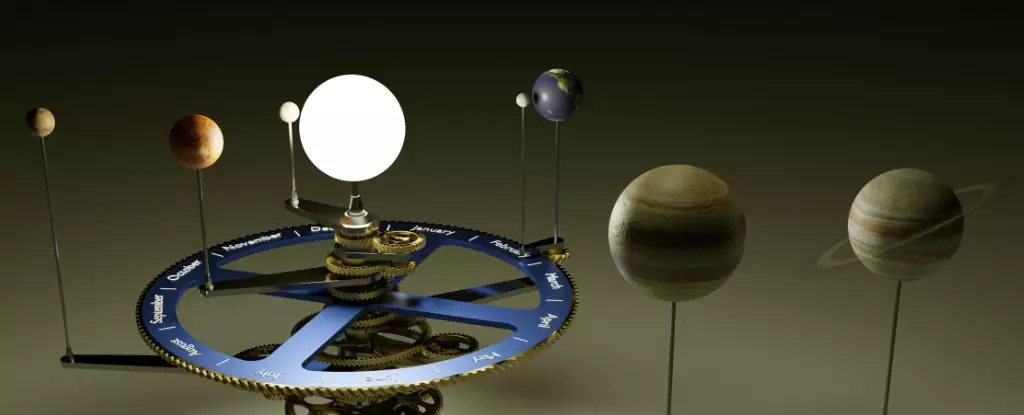As February transitions into March, a spectacular astronomical event unfolds—the rare opportunity to observe all the naked-eye planets in our solar system in one breathtaking glimpse. While previous reports highlighted the alignment of many planets, they often overlooked the elusive Mercury, which will make its grand entrance in the evening sky after a solar conjunction. For enthusiasts and casual stargazers alike, this astronomic occurrence offers a chance to embrace the wonders of our celestial neighbors.
The Significance of Planetary Alignments
Planetary alignments are significant because they occur only under specific geometric conditions within the solar system. The slow-moving giants—Jupiter and Saturn—play essential roles in these occurrences, as their motions allow for such beautiful formations. However, the fleeting Mercury has historically challenged amateur astronomers; its small size and proximity to the Sun make it difficult to spot. With Mercury joining the lineup this week, sky watchers have a rare opportunity to witness all eight planets just above the horizon as darkness falls, an event that is set to become increasingly rare in the coming years.
The phenomenon of viewing all the naked-eye planets simultaneously brings a sense of connection to our place in the universe. This moment invites devotees to engage in a collective experience, appreciating the sheer vastness and beauty of space while offering an excellent opportunity for educational outings, such as star parties and community events.
For those eager to spot Mercury, the dazzling Venus serves as an excellent guide. After its solar conjunction on February 9, Mercury will be visible low on the western horizon after sunset. In fact, on February 25, Mercury transitions to a position just 1.5 degrees north of Saturn, another keen target for astronomers. The celestial reality of viewing these planets can create a profound moment of connection between viewers and the cosmos, encouraging a desire for exploration and discovery.
Additional excitement arises in late February when the waxing crescent Moon joins this celestial dance, creating stunning views as it occult Mercury on March 1, particularly for observers in Hawaii and the Pacific regions. Such interactions enrich our understanding of celestial mechanics and provide insight into how these objects traverse their cosmic paths.
As Mercury and Venus charge toward their inferior conjunction, which occurs just a day apart on March 23 and 24, the celestial choreography unfolds further. The remarkable visual experience of catching these two planets racing back toward the Sun provides an opportunity to discuss orbital mechanics and the visibility of planets during various phases.
Visualizing Venus—a planet often considered a symbol of beauty—presents challenges as it approaches its conjunction with the Sun. However, those willing to embrace the challenge can revegetate the joy of observing these celestial wonders just before sunrise or after sunset, showcasing the delicate dance of our solar system.
Trailing behind these celestial luminaries is the fiery Mars, boasting an impressive magnitude that makes it a focal point of the evening sky, especially following its close opposition earlier this year. With the waxing gibbous Moon making an appearance alongside Mars on March 9, sky watchers can explore beautiful lunar conjunctions, revealing yet another layer of the universe’s complex canvas.
The upcoming NASA ESCAPADE mission to Mars captures both interest and imagination, further igniting public interest in the exploration of our neighboring planets. As humans continue to explore the Red Planet, observers can feel the excitement of a world beyond our own, enhancing our understanding of potential life beyond Earth.
While the outer gas giants present their challenges, the task of spotting Uranus and Neptune entices those courageous enough to navigate the night sky. With Uranus falling within the constellation Taurus and Neptune lingering in the murky depths near Pisces, both planets require a keen eye and suitable equipment, such as binoculars or telescopes, illuminating their discovery’s majesty.
Neptune holds the unique distinction of being the only planet identified through mathematical prediction, showcasing the incredible power of human curiosity and intellect in understanding the universe. As March unfolds, the beauty of the night sky will not only captivate those gazing upwards but also invite inquiry into the nature of our universe.
As the month of March brings forth its celestial wonders, astronomers and casual stargazers alike are urged to take advantage of this special occasion. Viewing all the naked-eye planets simultaneously is a rare privilege that encourages appreciation of our cosmic neighborhood. Whether it’s a quiet evening spent with binoculars or a lively star party with friends and family, the ephemeral beauty of the night sky offers both solace and inspiration. Prepare for breathtaking encounters with our neighboring planets and embrace the magic that unfolds in the heavens above.

